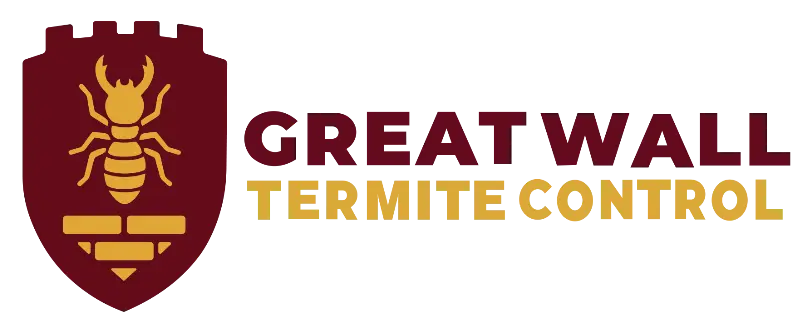Need to identify an infestation?
Termite Identification Guide: How to Spot and Understand Termites in the San Jose Bay Area
If you suspect termite activity in your home, identifying the species and behavior of these silent destroyers is the first step toward effective termite control. Termites are responsible for billions of dollars in property damage across the U.S. every year, and many infestations go unnoticed until significant damage is already done.
This comprehensive termite identification guide is specifically written for homeowners and property managers in the San Jose Bay Area. It will help you understand what termites look like, how they behave, and what signs to watch for—all while supporting SEO-rich keyword targets for maximum visibility.
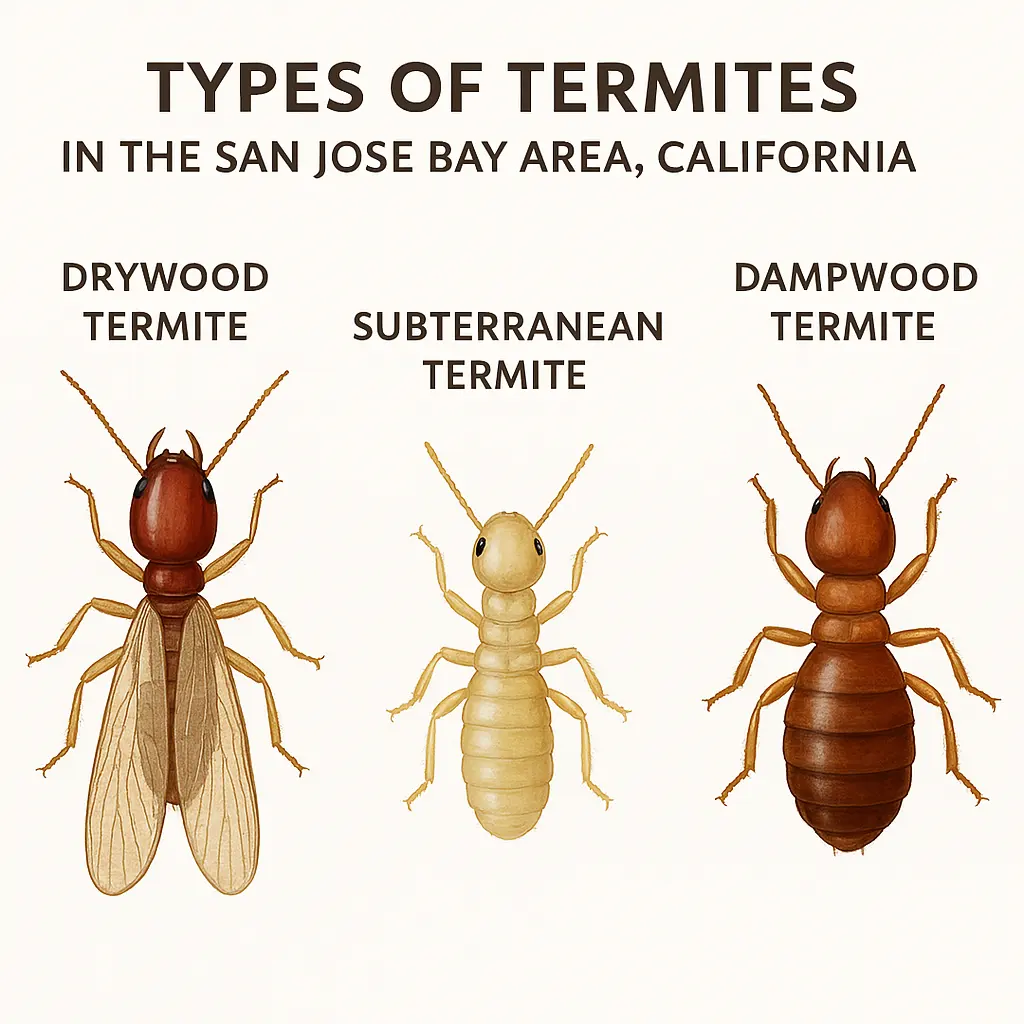
What Do Termites Look Like?
Termites are small, soft-bodied insects that live in large colonies and feed primarily on cellulose, the organic material found in wood. They are often mistaken for ants, especially during their swarming stage, but termites have some distinctive physical characteristics.
Key Physical Traits:
-
Straight antennae (unlike ants, which have bent antennae)
-
Thick waists (ants have pinched waists)
-
Equal-length wings (if present; ants have front wings longer than the back)
-
Creamy white to light brown bodies, depending on the type and caste
types of termites in the san jose bay area
Subterranean Termites (Reticulitermes hesperus)
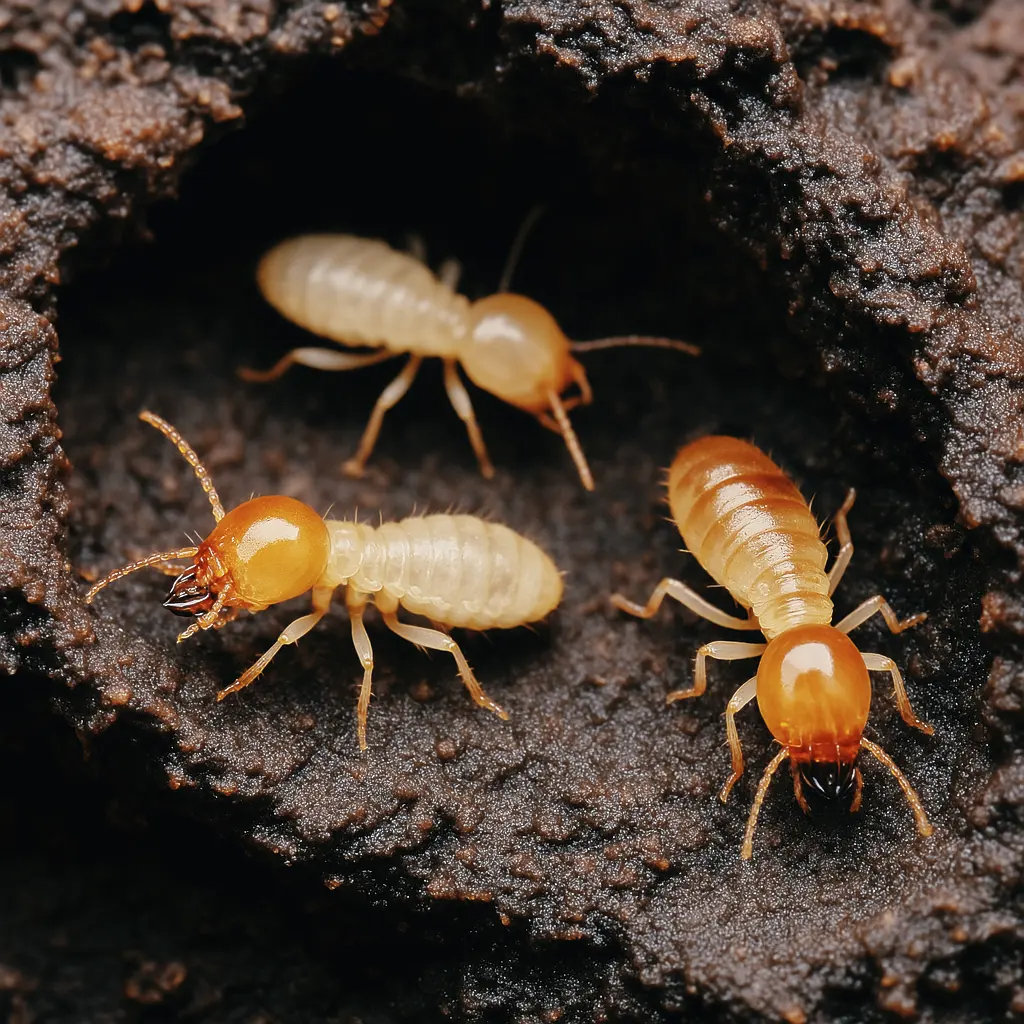
1. Subterranean Termites (Reticulitermes hesperus)
These are the most destructive termites in California and are responsible for the majority of infestations in the area.
Identification:
-
Workers: Creamy white, 1/8 inch long
-
Soldiers: Larger jaws and darker heads
-
Swarmers: Dark brown to black, about 3/8 inch long with long, pale wings
Habits:
-
Live underground or in moist, hidden areas
-
Build mud tubes to travel between nest and food source
-
Feed on structural wood, causing serious damage over time
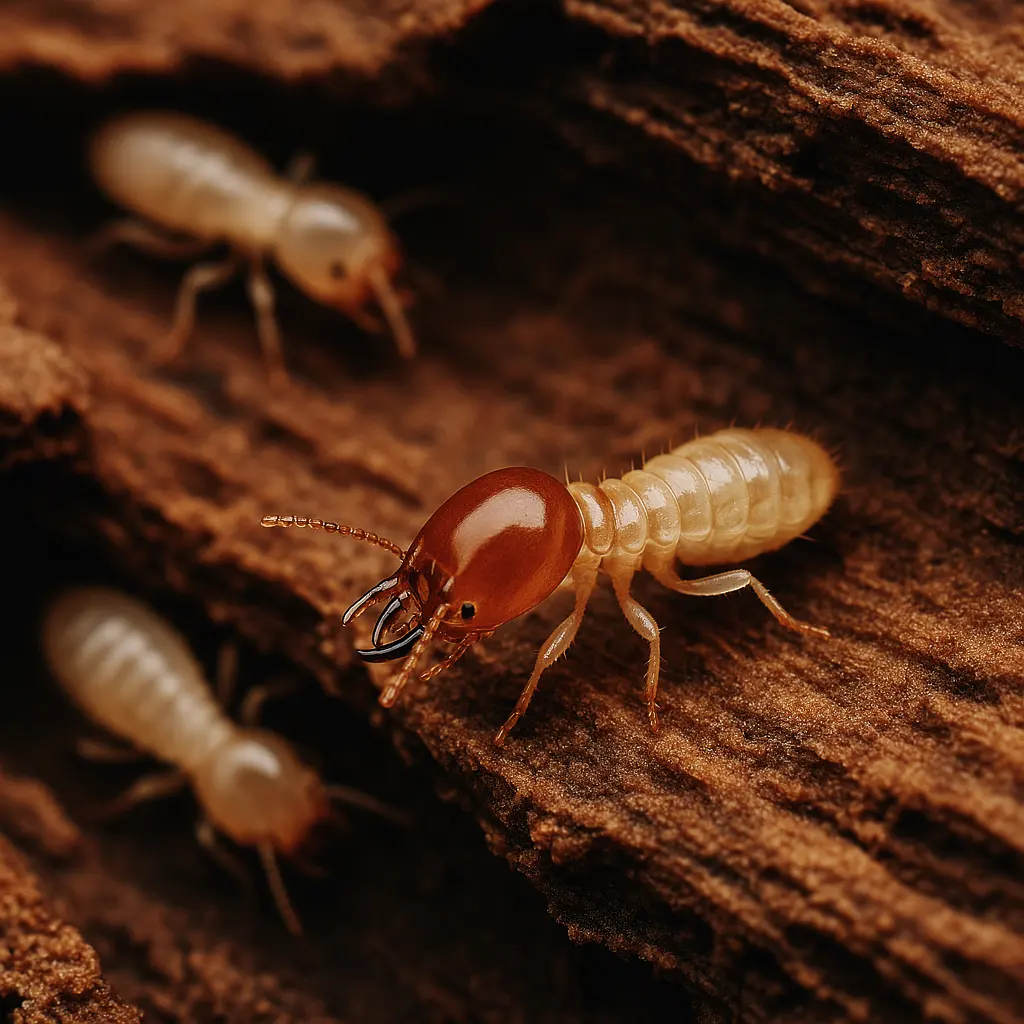
2. Drywood Termites (Incisitermes minor)
Unlike subterranean termites, drywood termites do not require contact with soil.
Identification:
-
Swarmers: Reddish-brown, about 1/2 inch long with transparent wings
-
No worker caste: Nymphs act as workers
Habits:
-
Nest directly inside dry wood, including framing, furniture, and flooring
-
Produce distinct, pellet-like frass (droppings)
-
Infestations are usually localized and slower to spread but still damaging
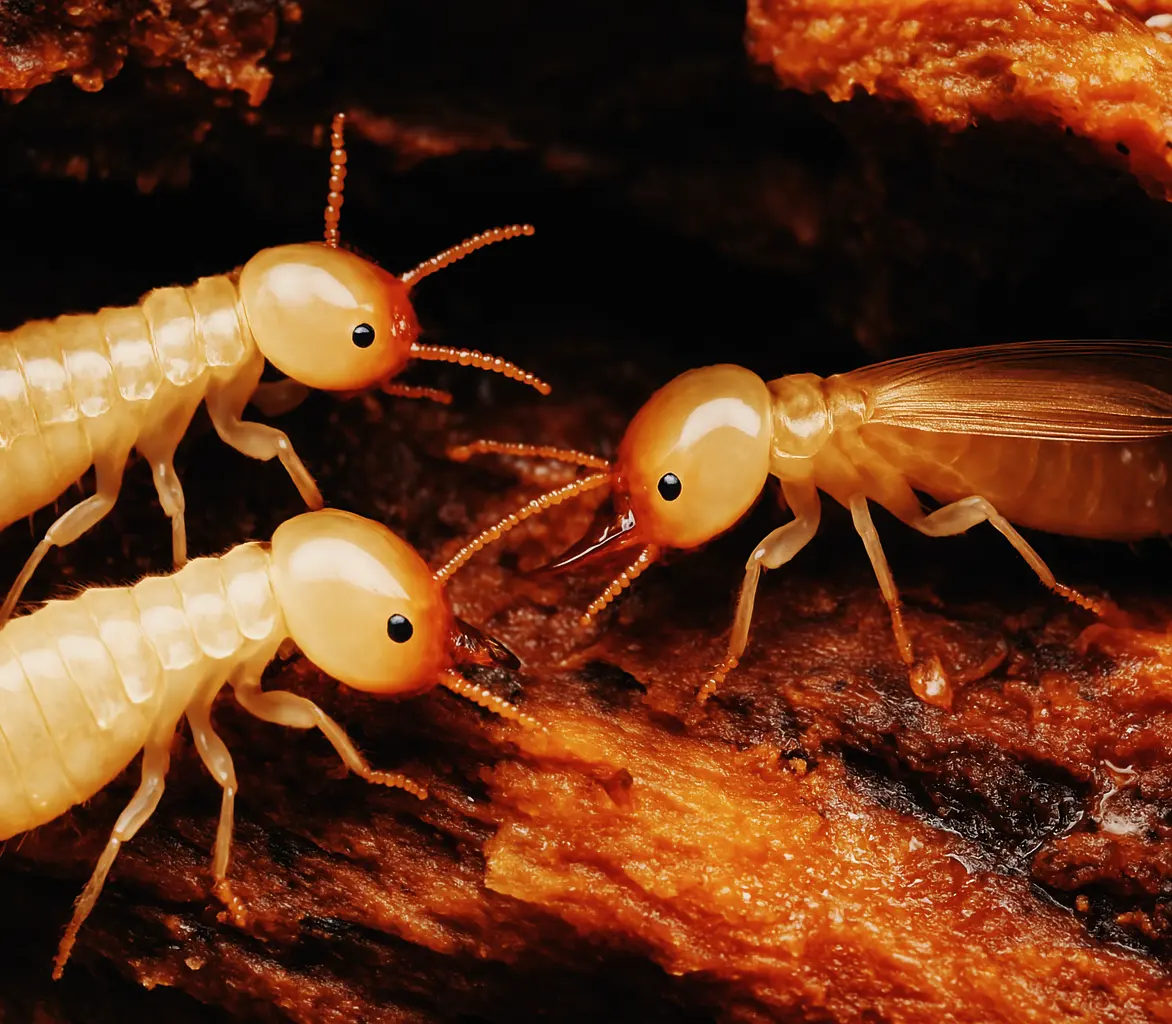
3. Dampwood Termites (Zootermopsis angusticollis)
Less common in homes but occasionally found in areas with excessive moisture.
Identification:
-
Larger in size: Swarmers are up to 1 inch long
-
Bodies are a range of colors from light brown to reddish-brown
Habits:
-
Thrive in high-moisture wood (logs, stumps, decaying structural wood)
-
Typically found in leaky or poorly ventilated areas like crawl spaces
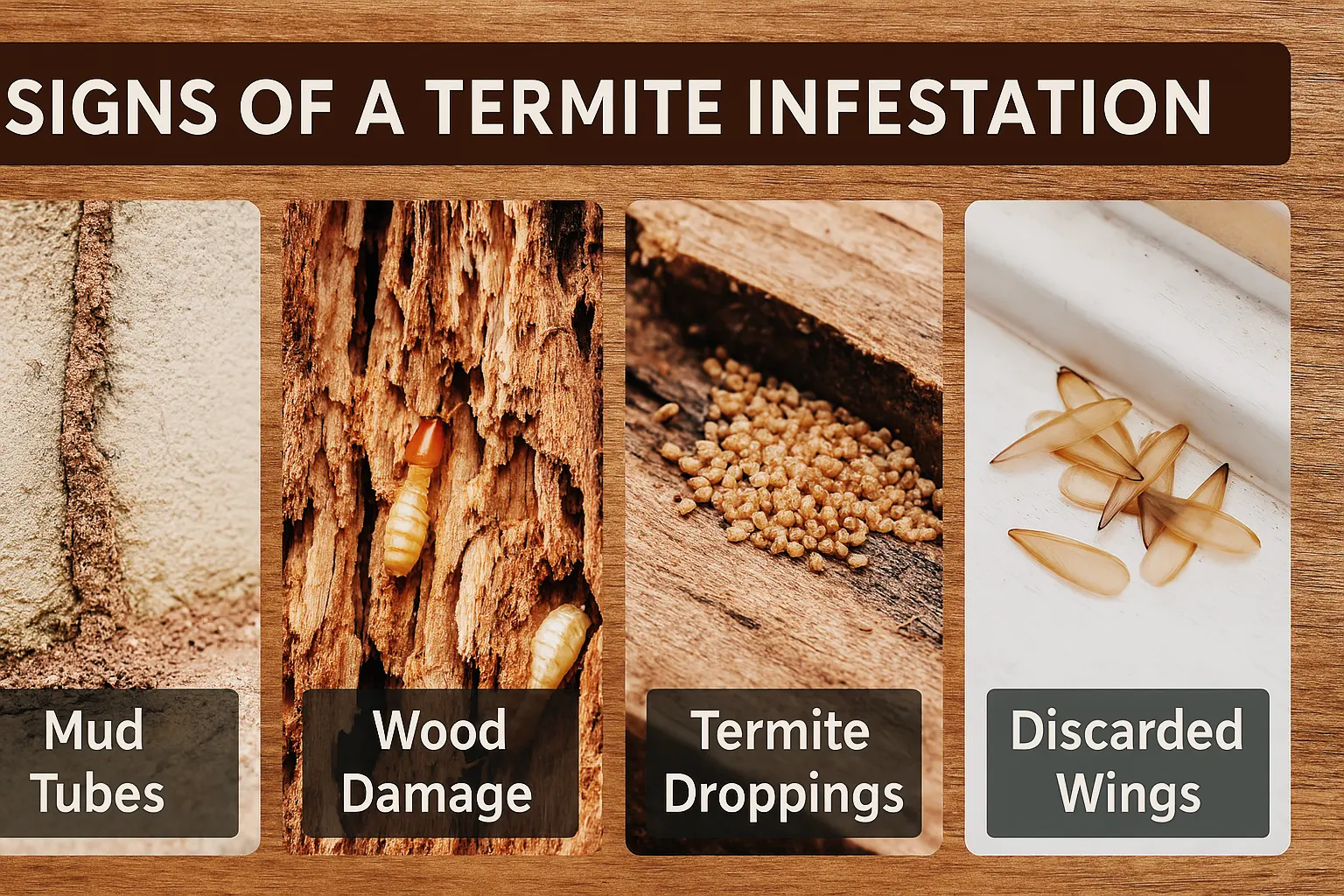
Signs of a Termite Infestation
Early detection of termites is critical to minimizing damage. Here are the most common signs that you may have termites:
-
Mud Tubes: Small, dirt-colored tunnels along foundation walls, used by subterranean termites to reach wood.
-
Swarmers (Alates): Winged termites that emerge in spring or after rain. Finding discarded wings near windows is a red flag.
-
Frass (Droppings): Drywood termites leave behind small, ridged, wood-colored pellets.
-
Hollow-sounding wood: Tap wooden surfaces; if they sound hollow or papery, termites may have eaten through the inside.
-
Bubbling or peeling paint: Often mistaken for water damage but could be caused by termite activity under the surface.
-
Visible damage: Cracked baseboards, sagging floors, or weakened wood structures.
Termite Caste System: Who's Who in the Colony
Each termite colony has a sophisticated caste system:
1. Workers
-
Responsible for foraging, feeding other castes, and maintaining the nest
-
Cause the majority of wood damage
2. Soldiers
-
Defend the colony against predators
-
Identified by their large jaws and darker heads
3. Swarmers (Alates)
-
Reproductive members that leave the colony to start new ones
-
Usually the first visible sign of an infestation
4. Queen and King
-
Responsible for reproduction
-
The queen can live for over a decade and lay thousands of eggs

When is Termite Season in the Bay Area?
In the San Jose region, termite swarming typically occurs:
-
Subterranean termites: Late winter to early spring (especially after rain)
-
Drywood termites: Late summer to early fall
Swarming is when reproductive termites leave their colony to start new ones. If you see swarmers indoors, it's a strong sign there's an established colony in or near your home.
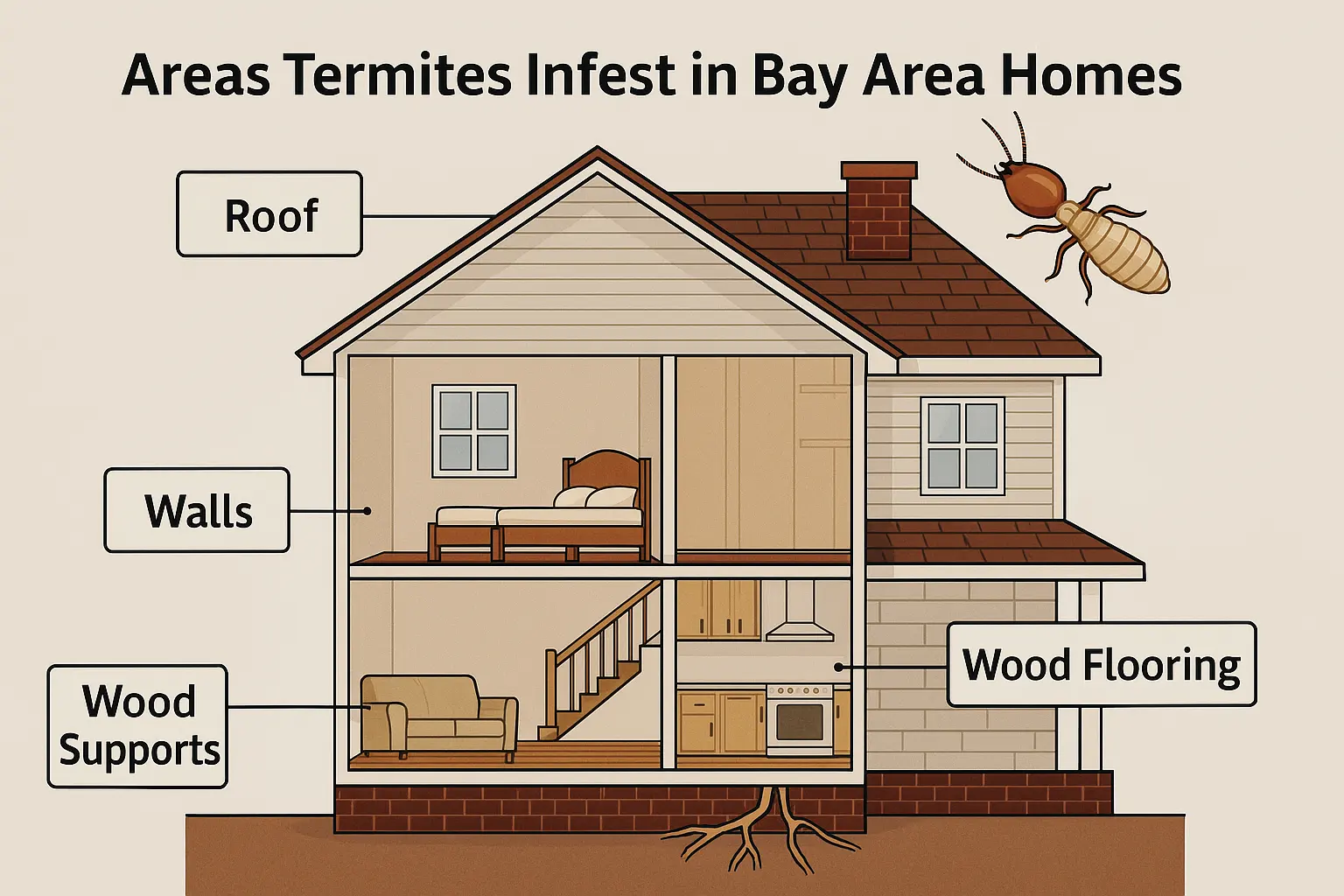
Common Areas Termites Infest in Bay Area Homes
Knowing where termites tend to invade can help you detect issues sooner:
-
Crawl spaces and basements
-
Wooden siding and fascia
-
Roof eaves and attics
-
Around plumbing leaks or foundation cracks
-
Hardwood floors and wall framing
-
Wooden decks and fence posts
How to Confirm You Have Termites
While DIY termite identification can help, professional termite inspections are the most reliable way to confirm an infestation. A licensed pest control expert can:
-
Identify the species and severity of infestation
-
Locate hidden nests and feeding sites
-
Recommend treatment and prevention options
Tip: Many reputable pest control companies in the Bay Area offer free termite inspections.
What to Do if You Suspect Termites
If you see any signs of termites, don’t wait. Termites can cause extensive damage in a short time—especially subterranean species. Here’s what to do next:
-
Avoid disturbing the area (you could scatter the colony)
-
Take photos of any damage, droppings, or wings
-
Call a licensed termite control company for an inspection
Termite Identification FAQs
What bugs are commonly mistaken for termites?
Flying ants, carpenter ants, and even certain beetles can resemble termites. Look for straight antennae and equal-length wings to distinguish termites.
How can I tell if the swarmers I found are from inside or outside?
If you find swarmers or wings indoors, it's very likely the colony is inside your home.
Are termites active year-round?
Yes. Even though you may see them swarm in certain seasons, termite colonies are active 24/7, 365 days a year.
(For more Frequently Asked Questions about termites, visit our FAQ page)
Final Thoughts: Don't Wait to Identify and Act
Termites are one of the most destructive pests in the San Jose Bay Area, and early identification is the best defense. Now that you know what to look for, where to look, and which termites are most common in this region, you’re better equipped to protect your property.
Need help identifying or eliminating termites? Contact us for a free termite inspection in the San Jose Bay Area and get peace of mind today: (408) 921-2192
